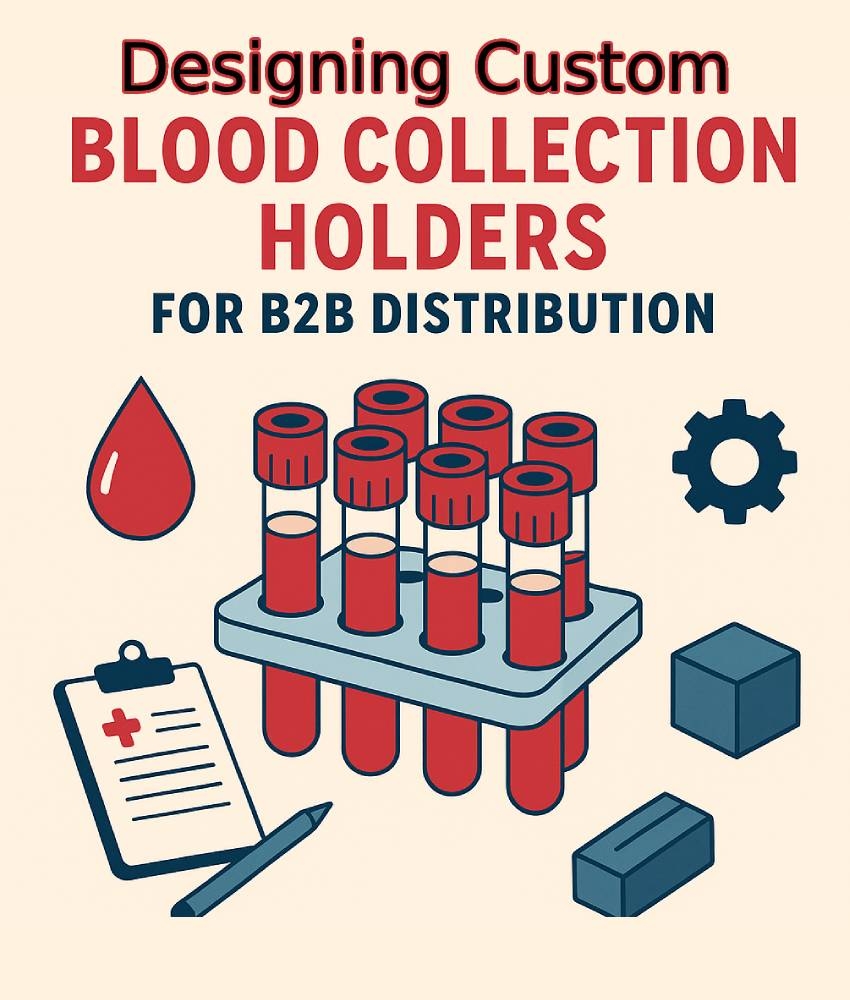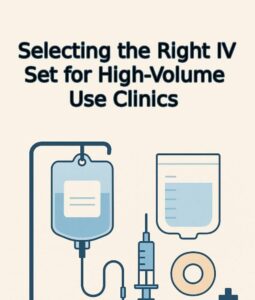In the ever-evolving landscape of clinical diagnostics and laboratory operations, the demand for tailored, high-performance accessories is growing rapidly. Products like the blood tube holder, OEM blood tube tray, and plastic blood tube holder are no longer just consumables — they’re integral tools shaping efficiency, hygiene, and standardization. For distributors and medical device brands in the B2B sector, investing in the customization of these components can open doors to better differentiation, brand recognition, and market share.
This article explores how to strategically design and develop custom blood tube holder systems for B2B distribution, what to look for in manufacturing partnerships, and how customization aligns with industry trends and user experience. Know more..
Why Customization Matters in Blood Collection Accessories
Standardized solutions may suffice in basic healthcare settings, but specialized environments — from mobile phlebotomy units to high-volume hospital labs — require tailored approaches. Here’s why customizing your blood tube holder or OEM blood tube tray is a winning strategy:
- Operational Efficiency: Custom-fit holders can streamline workflows and reduce sample handling errors.
- Brand Differentiation: With white-label or OEM blood tube tray options, businesses can showcase their logo, unique colors, or structural innovations.
- Compliance and Certification: Custom designs allow easier integration of regulatory requirements, such as ISO standards or CE/FDA labeling.
Key Features to Include in a Custom Blood Tube Holder Design
To stay competitive and relevant, your plastic blood tube holder design must meet the demands of today’s laboratories, clinics, and mobile units. Here are essential considerations:
1. Universal Compatibility
Design your blood tube holder to accommodate various tube sizes (e.g., 13x75mm, 13x100mm, 16x100mm). Consider offering modular or interchangeable inserts that provide flexibility.
2. Material Strength and Durability
Choosing the right plastic — typically polypropylene (PP) or polycarbonate (PC) — ensures chemical resistance, sterilizability, and longevity. A reliable plastic blood tube holder must endure repeated use, exposure to cleaning agents, and sometimes autoclaving.
3. Stackability and Space Efficiency
Medical environments are often cramped. Stackable OEM blood tube tray models allow users to optimize space in storage and during transport, particularly in centralized labs and mobile clinics.
4. Color-Coding Options
Color coding helps prevent cross-contamination and simplifies workflow. Customize your blood tube holder in a range of shades to align with color-based protocols (e.g., red for chemistry, lavender for hematology).
5. Anti-Spill Design
A non-slip base and snug tube compartments reduce the risk of spills and injuries. This is crucial in environments with high foot traffic or moving vehicles.
The Customization Process: OEM Opportunities and Design Collaboration
OEM partnerships offer the flexibility to innovate while leveraging a manufacturing partner’s expertise and capacity. Here’s how successful OEM customization unfolds:
Step 1: Define Product Specifications
Start with detailed requirements:
- Number of tubes per OEM blood tube tray
- Dimensions and materials
- Labeling and printing needs (logos, barcodes, instructions)
- Packing requirements (blister packs, bulk boxes, etc.)
Step 2: 3D Design and Prototyping
CAD modeling ensures precise engineering, while rapid prototyping validates the ergonomic and mechanical aspects of your plastic blood tube holder.
Step 3: Mold Development and Testing
High-quality molds guarantee repeatability and tight tolerances. Most OEM manufacturers offer mold maintenance, part inspection, and post-molding services.
Step 4: Mass Production and Quality Control
Before scaling up, quality protocols like ISO 13485, FDA QSR, and CE certification processes should be integrated. Choose suppliers who offer in-line inspections and traceable batch coding.
B2B Distribution Considerations: What Distributors Need to Know
B2B distributors looking to market custom blood tube holder systems should consider these factors:
1. MOQ Flexibility
Whether you’re targeting small clinical labs or nationwide hospital networks, having scalable minimum order quantities for your OEM blood tube tray helps balance inventory and cash flow.
2. Packaging Customization
Distributors often need packaging adapted for regional compliance, branding, or bulk configurations. Co-develop packaging with your OEM partner for improved logistics and appeal.
3. Global Logistics Compatibility
Design plastic blood tube holders that comply with export regulations and withstand international shipping — this includes material labeling, size constraints, and packaging integrity.
Trends Shaping the Future of Blood Collection Holder Design
Medical device OEMs and suppliers must stay ahead of innovation curves. Here are some trends defining the next generation of blood tube holder products:
• Sustainable Materials
More B2B buyers are requesting eco-friendly plastic blood tube holder options using biodegradable plastics or recyclable polymers.
• Smart Integration
RFID tagging or QR code embedding is gaining popularity, allowing real-time tracking of samples during transit.
• Ergonomic Design
Modern holders are designed with end-users in mind. Rounded edges, lightweight designs, and easy-carry options are in high demand.
Choosing the Right OEM Partner for Your Blood Tube Holder Line
Selecting the right OEM blood tube tray supplier is critical. Look for partners who offer:
- Full In-House Capabilities: From design to mold-making to injection molding
- Certifications: ISO 13485, FDA, CE, and local regulatory compliance
- Experience in Healthcare OEMs: Proven track record in manufacturing plastic blood tube holder and accessories
- Responsive Engineering Team: For continuous improvement and adaptation
Final Thoughts: Make Your Brand Stand Out with Custom Blood Tube Accessories
In today’s B2B medical distribution landscape, customized accessories like the blood tube holder, OEM blood tube tray, and plastic blood tube holder are more than functional devices — they are branding, safety, and operational tools rolled into one. Whether you’re a distributor targeting niche clinics or a brand building a complete phlebotomy solution line, investing in smart customization is a future-proof decision.
Collaborate with a forward-thinking OEM supplier who understands both the medical industry’s regulatory needs and your commercial ambitions. With the right design and distribution strategy, your custom blood tube holder can become a market leader in both innovation and usability.






